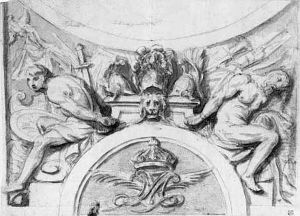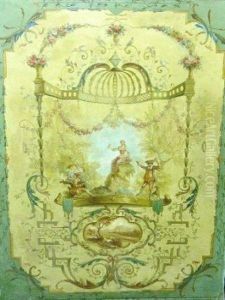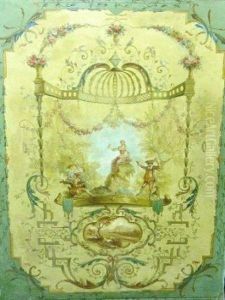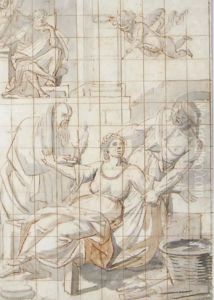Claude Ii Audran Paintings
Claude II Audran, a notable figure in 17th-century French art, was born in 1639 into the prolific Audran family, which produced several generations of influential artists and decorators. His career is often overshadowed by the achievements of his relatives, particularly Claude III Audran, yet his contributions to the period's artistic developments were significant in their own right. Claude II's work is emblematic of the transition between the late Mannerist and early Baroque styles, reflecting the evolving tastes of the French aristocracy and the royal court.
Audran's training and early career were deeply intertwined with the family tradition, working closely with his relatives in the family workshop. This environment provided him a comprehensive education in painting, engraving, and the decorative arts. Despite the scarcity of documented works specifically attributed to him, it's known that he contributed to the decoration of several important buildings and interior spaces in France. His style, characterized by elegant compositions and a delicate use of color, was well suited to the ornamental and allegorical subjects popular among his patrons.
Throughout his career, Claude II Audran worked on a variety of projects, including religious commissions, decorative schemes for private mansions, and possibly even designs for tapestries. His ability to adapt to the prevailing Baroque aesthetic while maintaining a sense of refinement and clarity in his work allowed him to serve a diverse clientele. Unfortunately, due to the common practice of the period of not signing works and the collaborative nature of many large-scale projects, pinpointing specific works solely to him is challenging.
Audran's legacy is somewhat eclipsed by the later success of members of his family, particularly his nephew Claude III, who became one of the most celebrated decorators of the Regence period. Despite this, Claude II Audran's contributions to the arts of the French Baroque period should not be underestimated. His work represents an important link in the chain of the Audran family's artistic dynasty, contributing to the evolution of French art from the grandeur of the Baroque to the more delicate and playful Rococo style that would dominate the 18th century. He died in 1684, leaving behind a legacy that, while not as well-documented as that of some of his contemporaries, played a crucial role in the development of French decorative arts.





